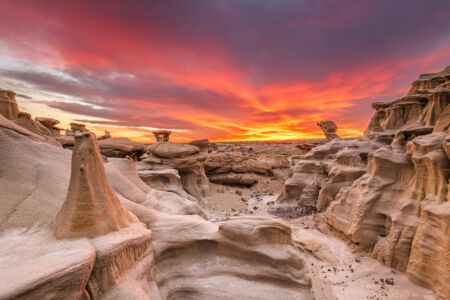
New Mexicans enjoy year-round warmth. But if you have varicose veins, the heat can make you uncomfortable if you don’t follow some precautions.
Year-round warm temperatures lure many visitors to New Mexico — and it’s also the reason so many New Mexicans stay. Why leave when you can enjoy sunny weather every day? But those with varicose veins may experience an increase in symptoms like swelling, cramping, and pain when temperatures heat up. In an attempt to hide the bulging veins, you cover up with pants instead of cooling off in shorts.
As anyone with varicose veins can testify, heat negatively affects varicose veins — whether a result of a session in a hot tub or a day in the sun. Once you understand how heat affects veins, you can take measures to reduce the harsh effects of heat on your varicose veins.
Your heart sends oxygenated blood to your organs and tissues via arteries. After the blood has circulated through your body, your veins send it back to the heart, where it gets another boost of oxygen. The veins do this with the help of small valves that shut tight and push blood upward. Over time, or due to certain conditions such as obesity or a sedentary lifestyle, the valves can weaken and let blood back up in the vein. The effect is especially acute in the leg veins, as they encounter the greatest force of gravity when pumping blood back to the heart. Eventually, the vein wall protrudes from under the skin, and a visible varicose vein forms.
Varicose veins indicate that the veins are overworked and damaged. Add heat to that scenario, and the veins become even more stressed. Heat widens veins, allowing more blood to flow through to the skin’s surface. It’s a natural reaction to the body trying to cool itself down. However, if your veins are already filled with pooled blood, this extra surge of blood combined with sweating overwhelms the enlarged ropes of veins even more. Heat doesn’t cause varicose veins, but it can worsen the symptoms.
Because the veins must work harder in the heat, your varicose veins may ache, cramp and swell when temperatures rise. Your first instinct may be to stay indoors where there’s air conditioning, and that will certainly help. But you needn’t avoid the sunshine and the great outdoors. Instead, protect your veins and reduce the symptoms of varicose veins by following some simple guidelines:
Exercise. Although it may be difficult to imagine exercising in the hot sun, it really is the best way to counteract varicose vein symptoms. Any activity that engages the calf muscles — walking, biking, and swimming — helps the veins circulate blood. Schedule a walk or bike ride when the sun goes down in the afternoon, so there’s less chance of getting overheated. Or better yet, dip into a refreshing pool for a few laps.
Skip the Salt. Foods packed with sodium cause water retention, which will only increase swelling in the legs. Fruit and leafy green vegetables are better choices for your vein health. This is especially true for foods high in magnesium (such as bananas, avocados, and sweet potatoes), which can act as an anti-inflammatory. Accompany your meals with plenty of water; staying hydrated maintains smooth blood flow, prevents cramps, and cools you down.
Compression Therapy. Hot weather may not seem like the ideal time to slip on a pair of tight elastic compression stockings; however, the graduated pressure they provide keeps the blood flowing so it doesn’t pool in the vein. Compression stockings come in a variety of styles and pressure levels, so you can choose a comfortable pair to wear even on hot days.
Elevation. Elevating your legs at the end of the day encourages blood to flow to the heart. For added relief, if you feel your legs swelling and cramping, cool them down with a cold cloth draped over the veins.
Although these methods will diminish the effects of heat on varicose veins, the only proven way to permanently eliminate varicose veins is one of several minimally invasive surgical procedures. After a brief recovery period, you can participate in outdoor activities without hiding your varicose veins.
Don’t Avoid the Sun
You don’t need to avoid the sun or cover up in long pants. Take advantage of the natural warmth of New Mexico by treating your veins at one of seven Center for Vein Restoration locations in the state. The offices are led by Dr. Chandran Vedamanikam, MD, a board certified physician in Venous and Lymphatic Medicine and Family Medicine, and Dr. Armin Foghi, PhD, who has completed fellowships in Internal Medicine and Cardiology. Contact their offices today for a consultation.
717 Encino Place NE
Suite 6
Albuquerque, NM 87102
1607 Camino Del Llano
Belen, NM 87002
500 E Walnut Street
Deming, NM 88030
2801 E. Missouri Avenue
Suite 27
Las Cruces, NM 88011
2220 Grande Boulevard SE
Suite B
Rio Rancho, NM 87124
Roswell
313 W Country Club Road
Suite 15
Roswell, New Mexico 88201
909 N Date Street
Suite B
Truth Or Consequences, NM 87901